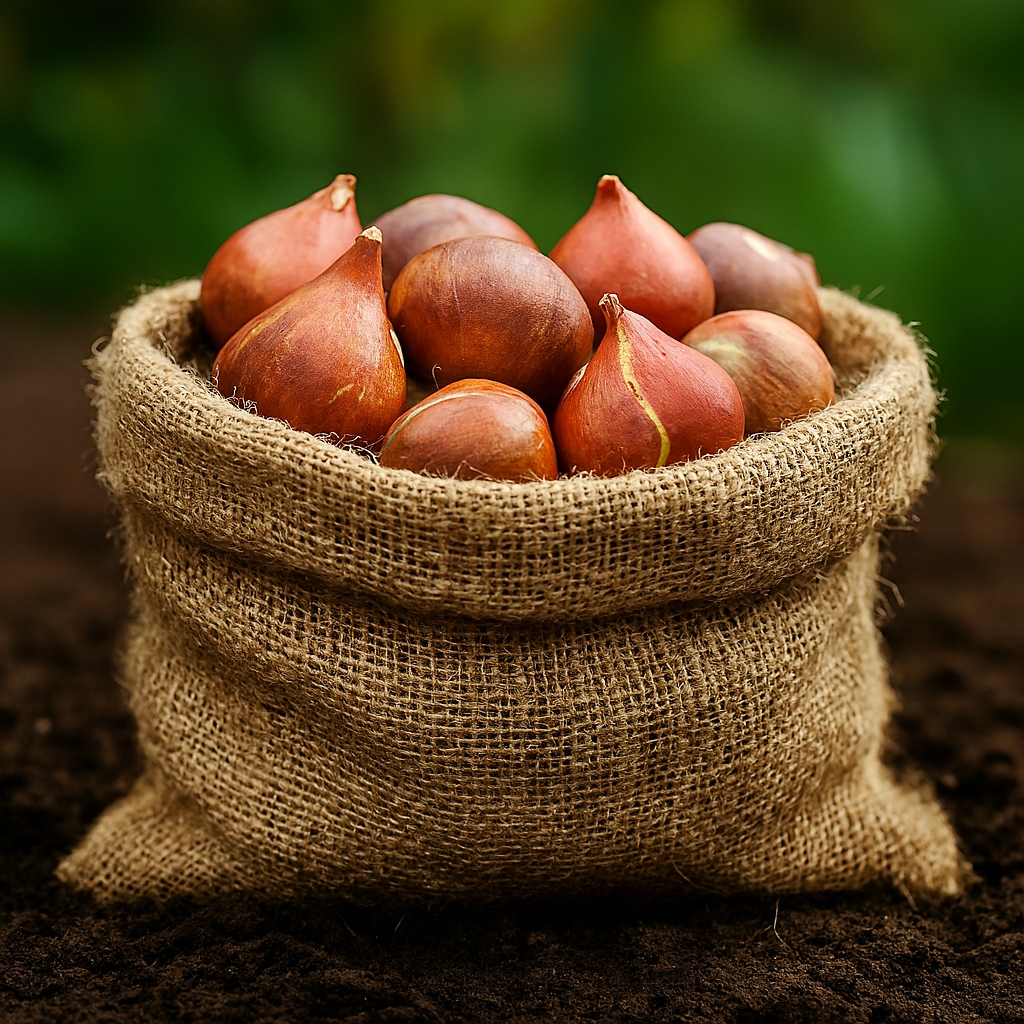Bull Rush Plants
Guardians of Waterways
Bull rush plants, also known as cattails or Typha, are commonly found in wetlands across the world. They play a significant role in maintaining the health and balance of aquatic ecosystems. These plants are not just visually striking, but also offer a myriad of ecological benefits.
Waterway Stabilization and Erosion Control
Natural Barriers
Bull rush plants act as natural barriers along the edges of waterways. Their dense growth helps to stabilize the soil and prevent erosion. The roots of these plants form a network that holds the soil together, reducing the impact of water flow on riverbanks and shores.
Sediment Trapping
One of the critical functions of bull rush plants is their ability to trap sediments. As water flows through these plants, the dense foliage slows down the movement of water, causing suspended particles to settle. This process helps in maintaining clearer water and reducing sediment buildup downstream.

Water Purification and Habitat Creation
Nutrient Uptake
Bull rush plants are natural purifiers. They absorb excess nutrients from the water, such as nitrogen and phosphorus, which are often byproducts of agricultural runoff and wastewater discharge. By removing these nutrients, bull rushes help prevent harmful algal blooms and maintain water quality.
Habitat for Wildlife
These plants provide essential habitat for a variety of wildlife. Birds, insects, amphibians, and small mammals find shelter and breeding grounds within the dense vegetation. Additionally, bull rush plants offer food sources for many species, contributing to the overall biodiversity of wetland ecosystems.
Water Filter
Role in Carbon Sequestration
Carbon Storage Bull rush plants play a role in carbon sequestration. As they grow, they absorb carbon dioxide from the atmosphere and store it in their biomass. This process helps mitigate the effects of climate change by reducing the amount of greenhouse gases in the atmosphere.
Decomposition and Peat Formation
When bull rush plants die, their decomposing material can contribute to the formation of peat. Peat acts as a long-term carbon sink, storing carbon for centuries. This process further enhances the role of bull rush plants in carbon sequestration and climate regulation.
Pollution Filtration
Heavy Metal Absorption Bull rush plants have the ability to absorb heavy metals from polluted water. Metals such as lead, mercury, and cadmium can be taken up by the roots and stored in the plant tissues. This process helps to clean the water and reduce the toxicity levels, making it safer for aquatic life and human use.
Phytoremediation
The process of using plants to remove contaminants from the environment is known as phytoremediation. Bull rush plants are particularly effective in this regard, as they can absorb and accumulate a wide range of pollutants. This makes them valuable allies in the restoration of contaminated waterways.
Mitigation
Flood Mitigation
Water Absorption Bull rush plants can absorb significant amounts of water, which helps in reducing the risk of flooding. During heavy rainfall, these plants act as natural sponges, soaking up excess water and preventing it from overwhelming the waterway. This helps in mitigating flood risks in adjacent areas.
Floodplain Formation
The presence of bull rush plants can contribute to the formation of floodplains. As they trap sediments and slow down water flow, they create conditions that allow for the development of floodplains. These areas can absorb excess water during floods, providing a buffer that protects downstream communities.

Aquatic Life
Support for Aquatic Life
Spawning Grounds for Fish Bull rush plants provide ideal conditions for fish to spawn and lay their eggs. The dense vegetation offers protection from predators and strong currents, creating a safe environment for fish to reproduce. This contributes to healthy fish populations and a balanced aquatic ecosystem.
Nursery Habitat for Young Fish
The shallow waters and abundant cover provided by bull rush plants create a perfect nursery habitat for young fish. These areas offer ample food sources and protection, allowing young fish to grow and develop before venturing into open waters. This helps maintain robust fish populations in the waterway.
Recreational Change
Recreation and Aesthetics
Natural Beauty Bull rush plants add natural beauty to the landscape of waterways. Their tall, elegant stalks and distinctive seed heads create picturesque scenes that enhance the aesthetic value of wetlands. They are often featured in nature photography and artwork for their visual appeal.
Recreational Opportunities
Wetlands with bull rush plants provide opportunities for various recreational activities. Birdwatching, fishing, and kayaking are popular pastimes in these areas. The presence of bull rush plants contributes to the overall enjoyment and appreciation of nature by visitors.
Culture
Cultural and Historical Significance
Traditional Uses Bull rush plants have been used by indigenous cultures for various purposes. The leaves and stems are used for weaving mats, baskets, and other items. The roots and shoots are edible and have been used as food sources. These traditional uses highlight the cultural significance of bull rush plants.
Symbolism and Folklore
Bull rush plants hold symbolic meanings in different cultures. They are often associated with resilience, adaptability, and protection. In some folklore, they are considered to be guardians of waterways, reflecting their vital role in maintaining the health of aquatic ecosystems. The bull rush is even mentioned in The Bible.
Bull Rush or Bullrush
Clarifying the Terminology
The name “bull rush” can be written in different ways, reflecting its versatility in the English language. While “bull rush” (two words) is commonly used, “bullrush” (one word) is also an acceptable variant. Regardless of spelling, the term refers to the same group of plants in the genus Typha, also known as cattails or reedmace.
Different Names for the Same Plant
Bull rush plants are known by several names depending on the region and context.
Bull Rush/Bullrush
This is the widely recognized name, often used in general discussions about the plant.
Cattail
In North America, the plant is frequently called a cattail due to its distinctive flower spike resembling a cat’s tail.
Reedmace
In the United Kingdom and other parts of Europe, the term reedmace is commonly used.
Common Misconceptions
Despite the different names, there are some misconceptions about the terminology.
Not All Bull Rushes are Typha
While the term bull rush is often associated with Typha, it can also refer to similar marsh plants in different genera, such as Schoenoplectus and Scirpus. It’s essential to specify the genus when discussing these plants scientifically.
Historical Variations
Historically, the term bull rush has been used interchangeably with other wetland plants. This can lead to confusion in historical texts and requires careful interpretation based on context.
Usage in Literature and Culture
The name bull rush has found its way into literature, culture, and folklore. These plants often symbolize resilience and protection, reflecting their role in stabilizing waterways and providing habitat for wildlife. Understanding the variations in naming helps appreciate the cultural and ecological significance of these versatile plants.
Bull Rush Plants Germinate
Germination of Bull Rush Plants
Bull rush plants, also known as cattails or Typha, have an interesting and efficient germination process. Understanding how these plants germinate can help us appreciate their role in wetland ecosystems and their ability to thrive in various environments.
Seed Production and Dispersal
Flowering and Seed Formation
Bull rush plants produce flowers that develop into dense, cylindrical flower spikes. These spikes contain numerous seeds, each equipped with fine, hair-like structures that aid in dispersal. As the seeds mature, they are released into the environment.
Wind and Water Dispersal
The seeds of bull rush plants are light and buoyant, allowing them to be carried by the wind or float on the water’s surface. This dual dispersal mechanism enables the seeds to travel significant distances from the parent plant, increasing the chances of colonizing new areas.
Germination Requirements
Moisture and Substrate
Bull rush seeds require a moist environment to germinate. They often settle in shallow water or on wet soil along the edges of waterways. The presence of water is crucial for the initial stages of germination, as it activates the seed and promotes growth.
Temperature and Light
Germination is influenced by temperature and light conditions. Bull rush seeds typically germinate best in warm temperatures and in areas with ample sunlight. These conditions ensure that the young plants receive the energy needed for growth and development.
Oxygen Availability
Adequate oxygen levels are essential for the germination process. Bull rush seeds can germinate in both aerobic (oxygen-rich) and anaerobic (low-oxygen) conditions, which is why they are well-suited to wetland environments where oxygen levels can fluctuate.

Germination Process
Seed Swelling and Radicle Emergence
Once the seeds are in a suitable environment, they absorb water and swell. The first visible sign of germination is the emergence of the radicle, or embryonic root, which anchors the seed in the substrate and begins to take up nutrients.
Shoot Development
Following radicle emergence, the shoot (or plumule) begins to grow upward toward the water’s surface or above the soil. This shoot will eventually develop into the characteristic tall stalks of the bull rush plant.
Establishment and Growth
As the young plant establishes itself, it continues to absorb nutrients and water from its surroundings. Bull rush plants grow rapidly, often forming dense stands that contribute to their ecological functions, such as erosion control and habitat provision.
Conclusion
In summary, bull rush plants are invaluable assets to our waterways. They stabilize shorelines, purify water, provide habitat for wildlife, support aquatic life, mitigate floods, and sequester carbon. They also offer recreational and aesthetic value and hold cultural and historical significance. Protecting and preserving these plants is crucial for maintaining the health and resilience of aquatic ecosystems. By understanding and appreciating their role, we can ensure that our waterways remain vibrant and thriving for generations to come.

Join the Discussion
Have you observed bull rush plants in your local waterways? What changes have you noticed in the surrounding environment?
How do you think bull rush plants contribute to the health of aquatic ecosystems? Share any specific examples or studies you know of.
Do you have any suggestions for protecting and preserving bull rush habitats? What actions can individuals and communities take to support these plants?
Have you used bull rush plants for traditional or practical purposes? Tell us about your experiences and the cultural significance of these plants.
What other plants or methods do you think are effective in maintaining waterway health? Let’s discuss alternative solutions and complementary plants that work alongside bull rushes.













Greenie And Powerful Change Of Environmentalism Since 1970s
[…] challenges and cultural contexts of those areas. This global perspective highlights the universal nature of the environmental movement and the shared commitment to […]